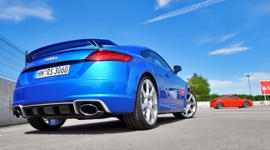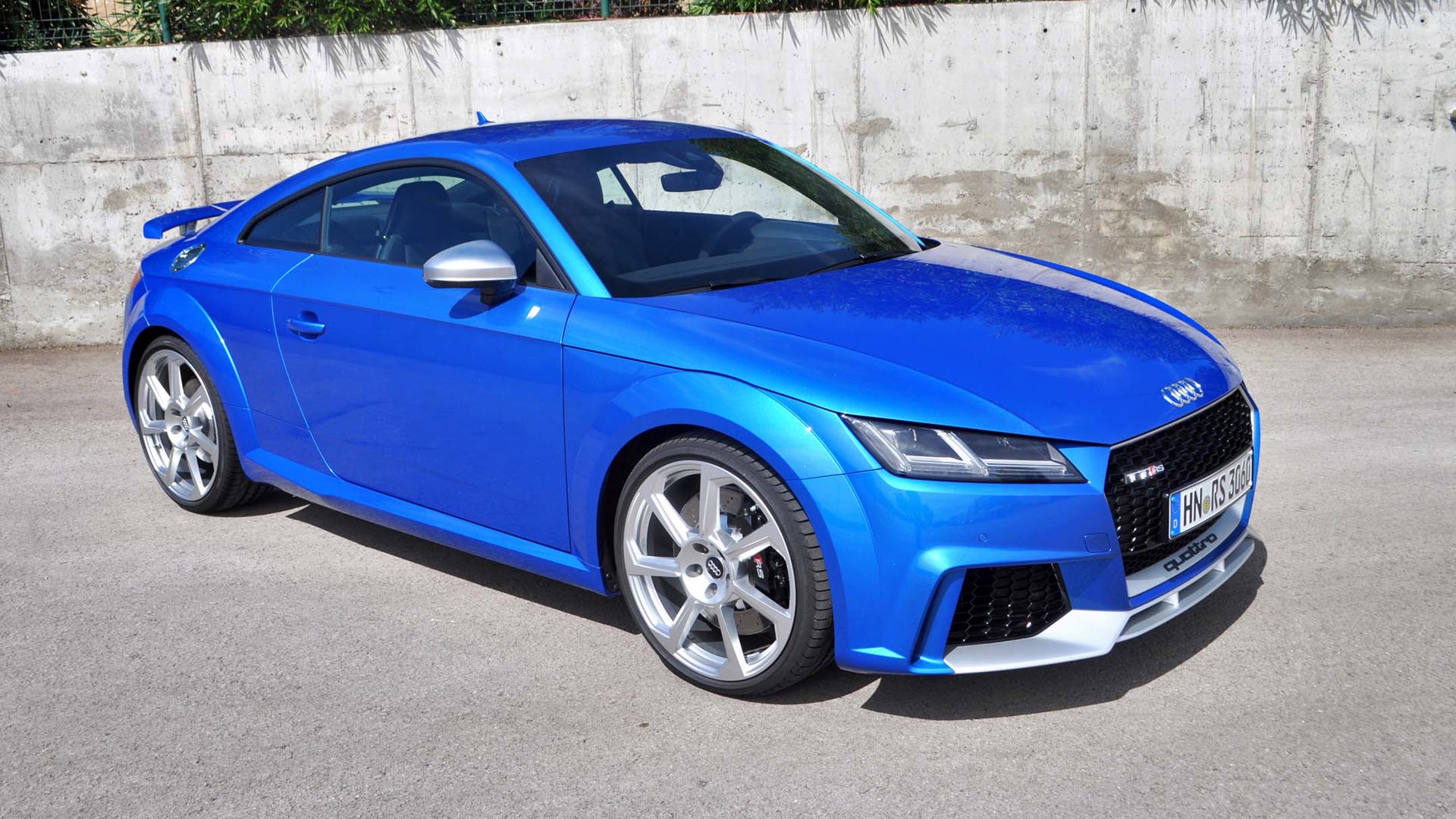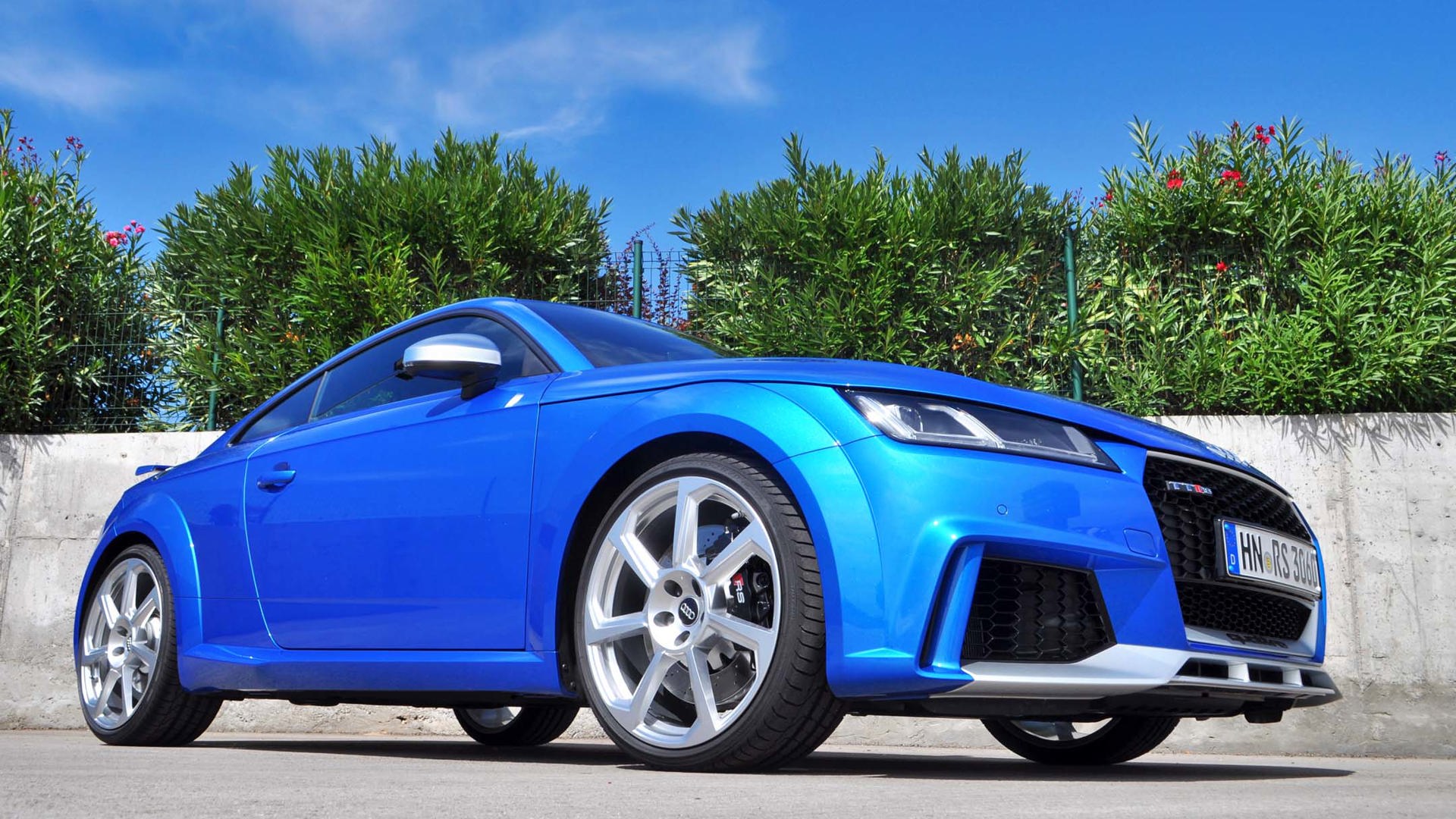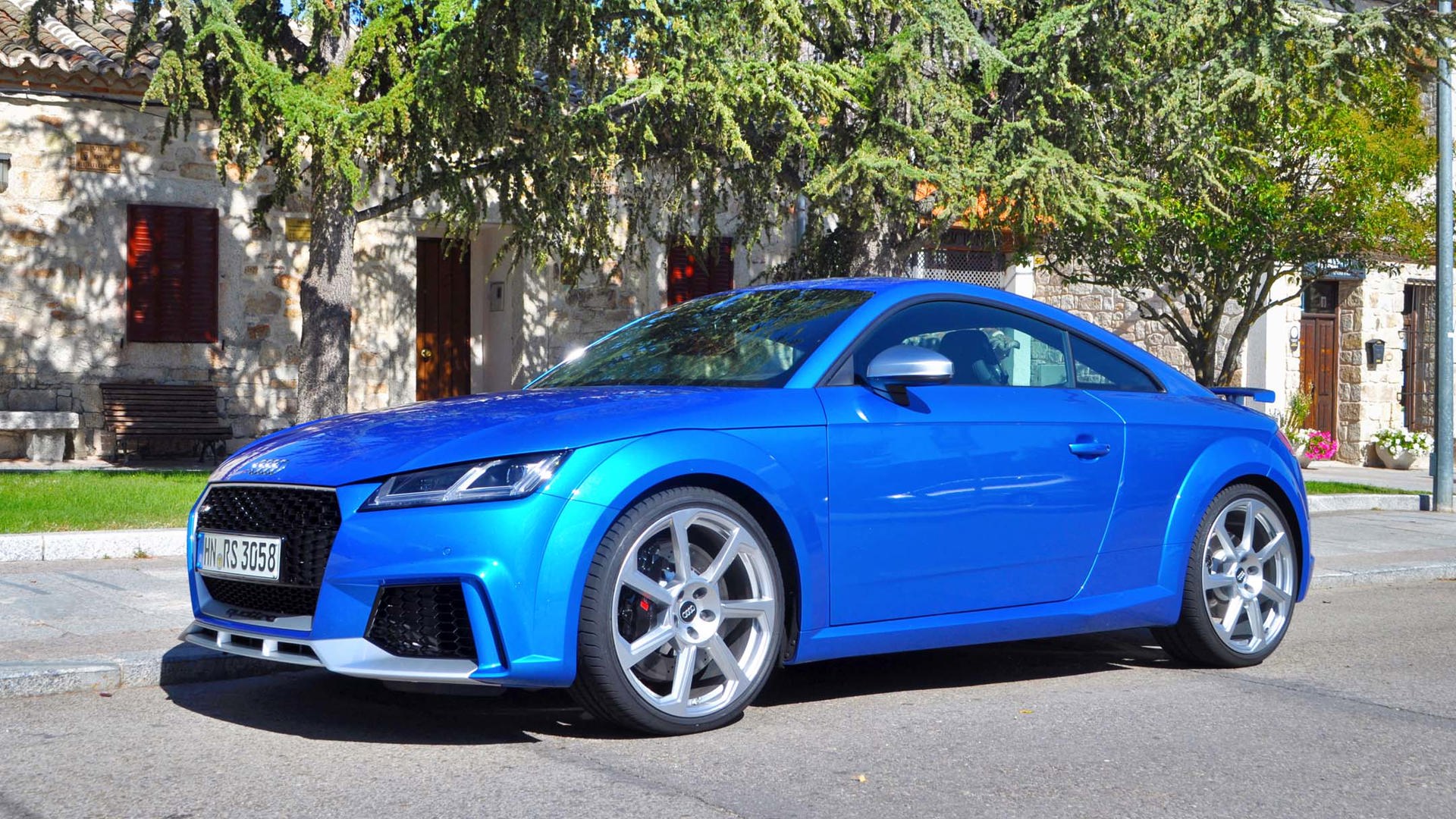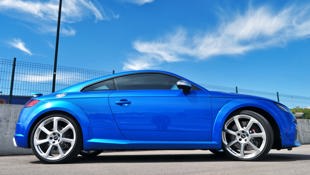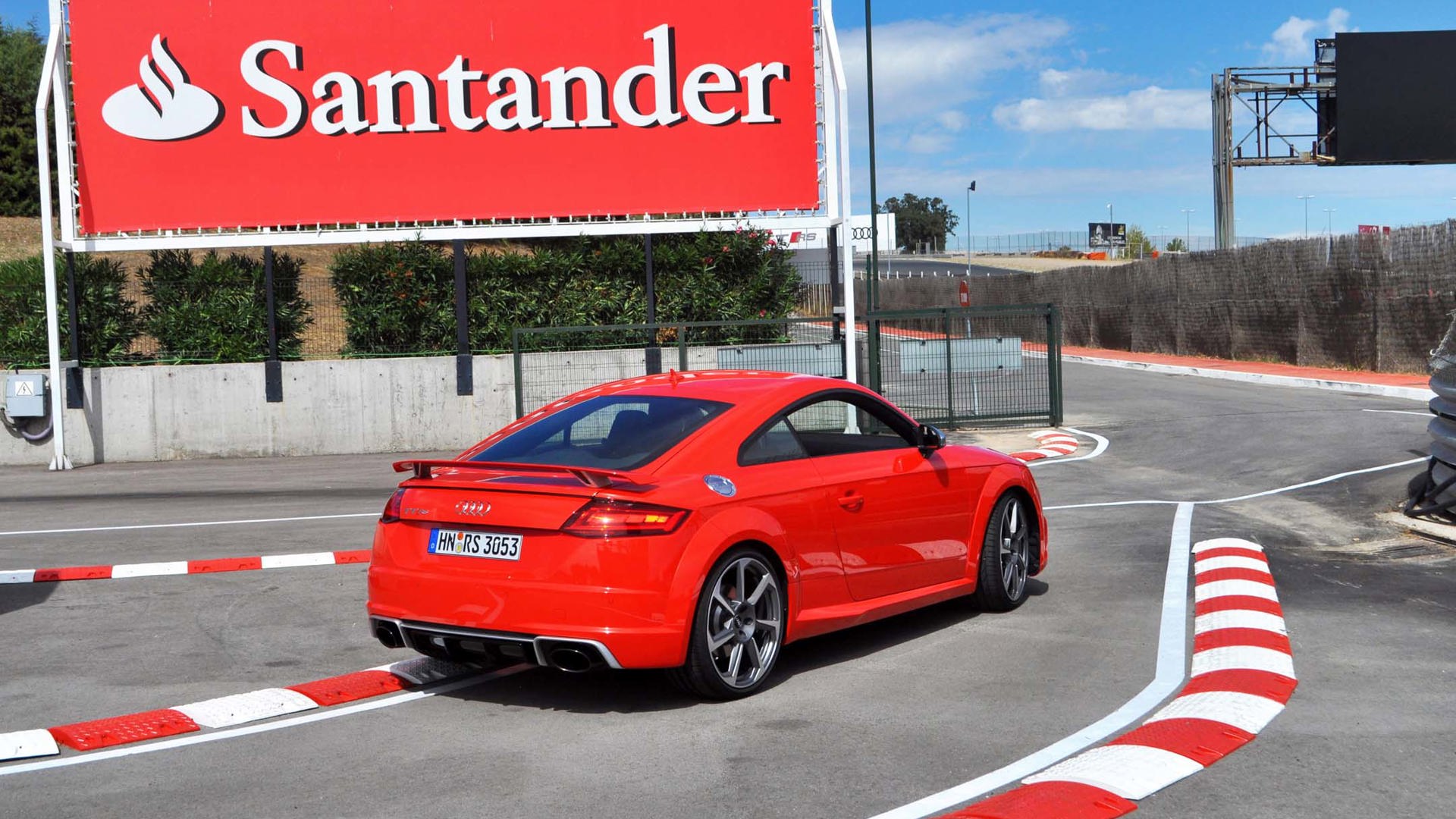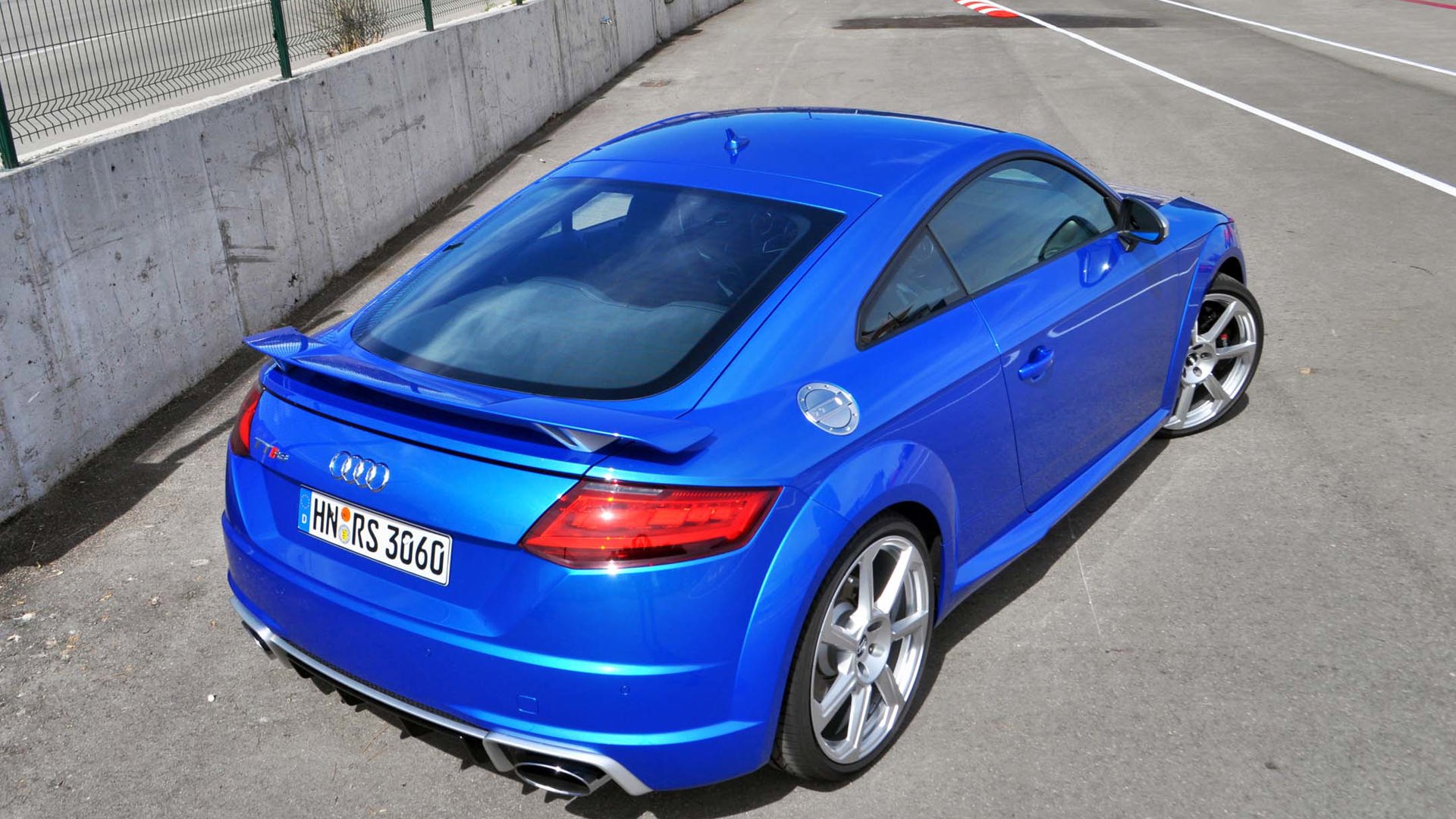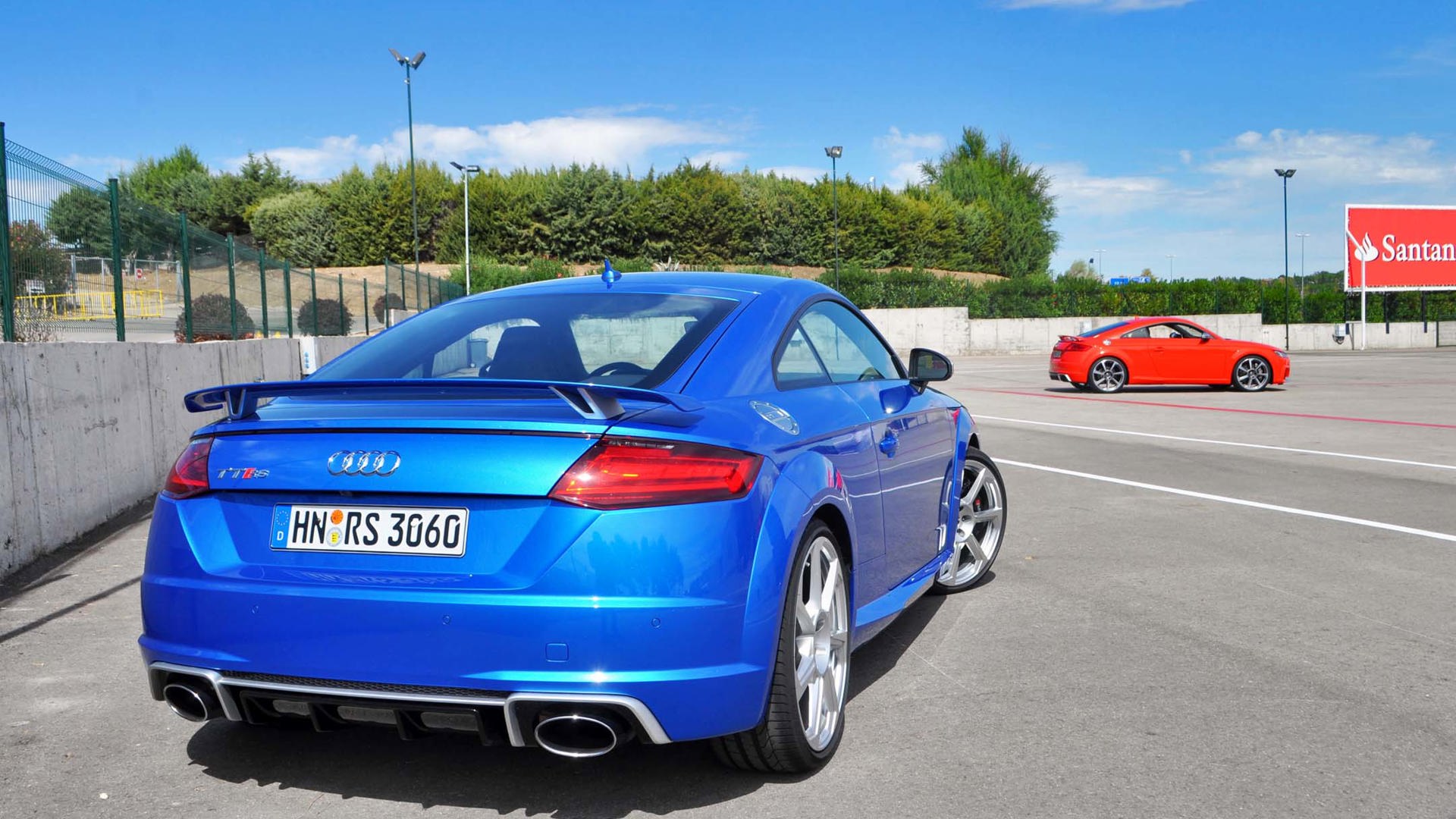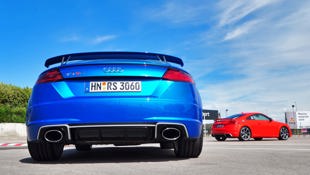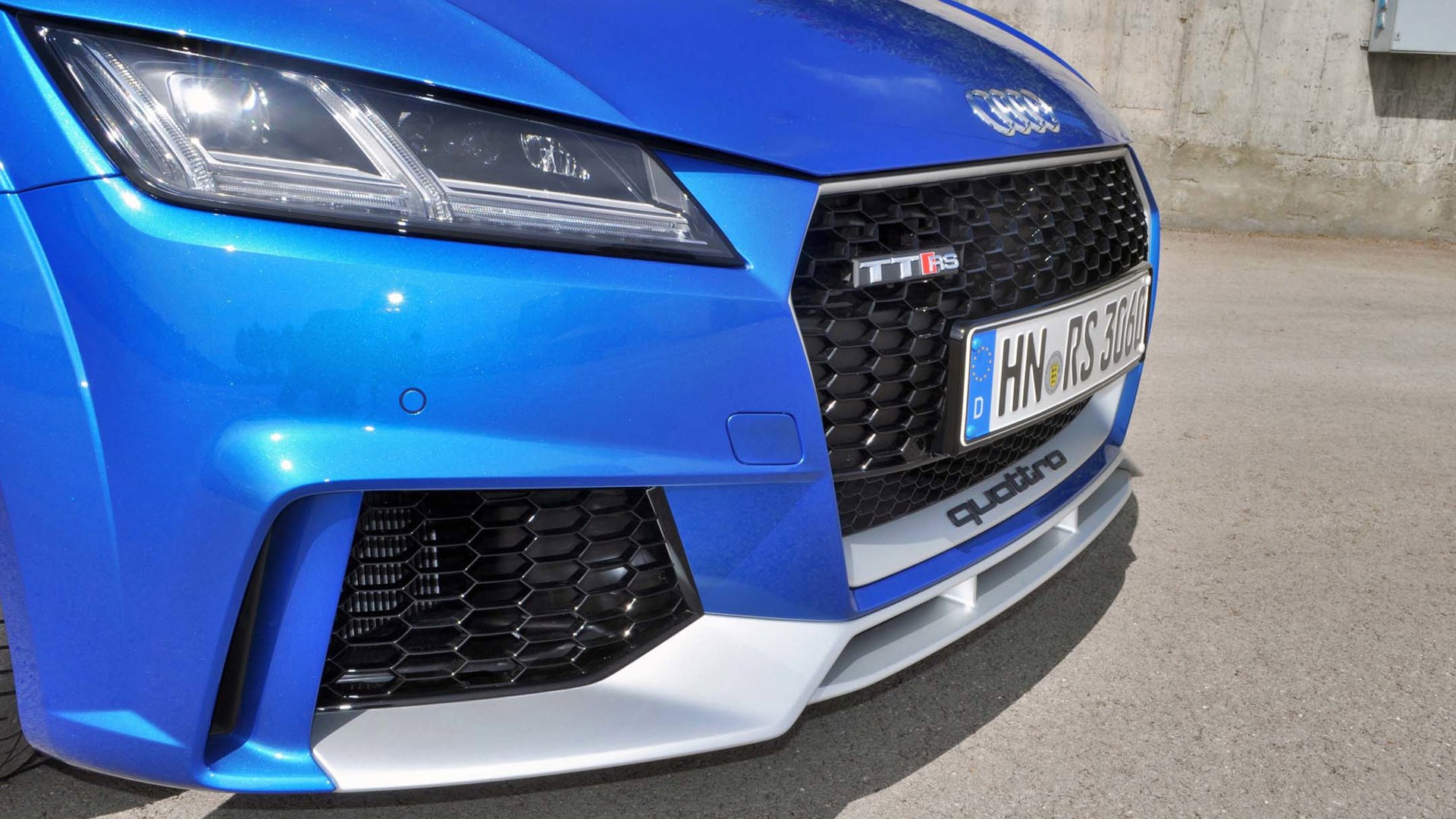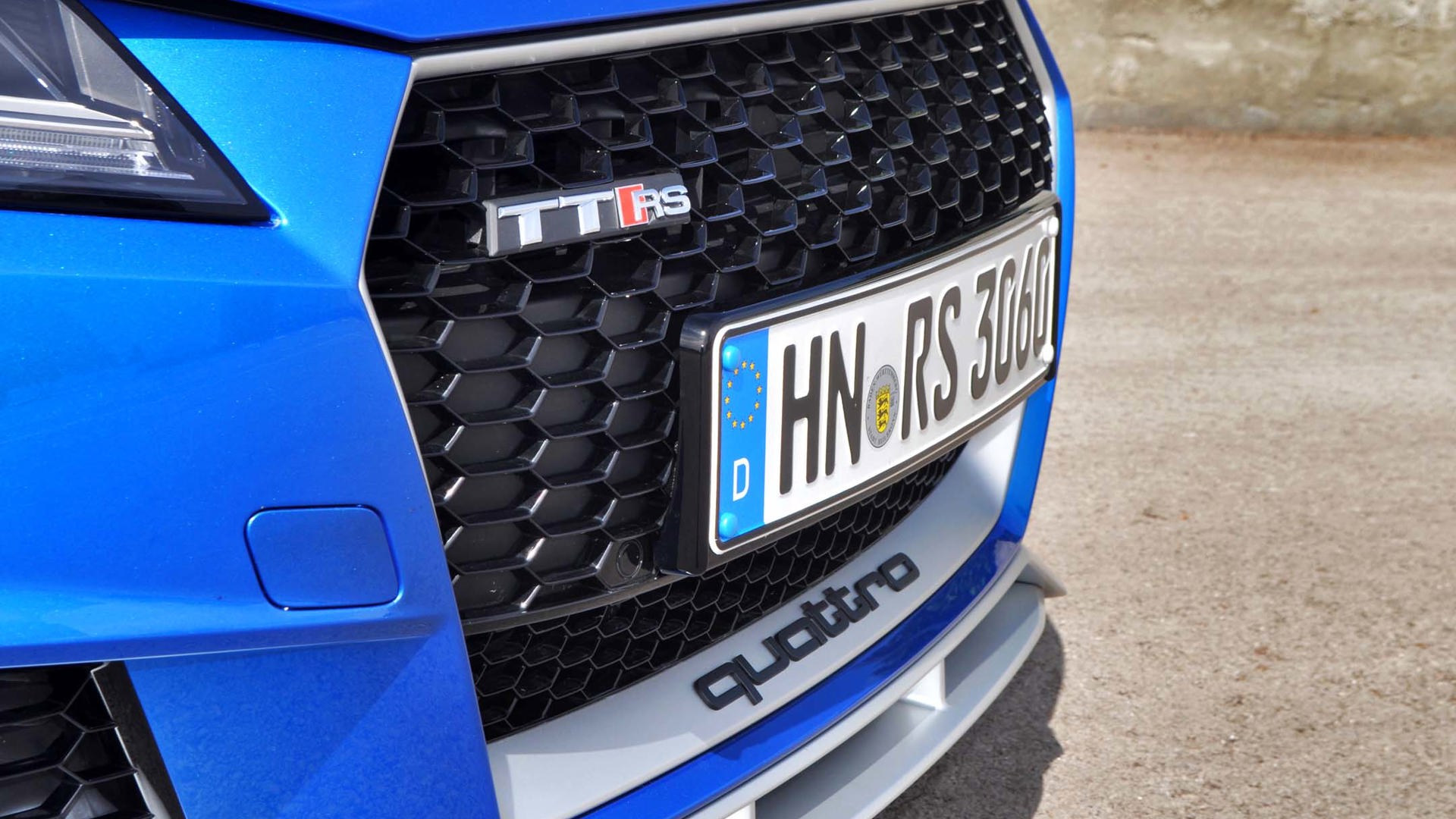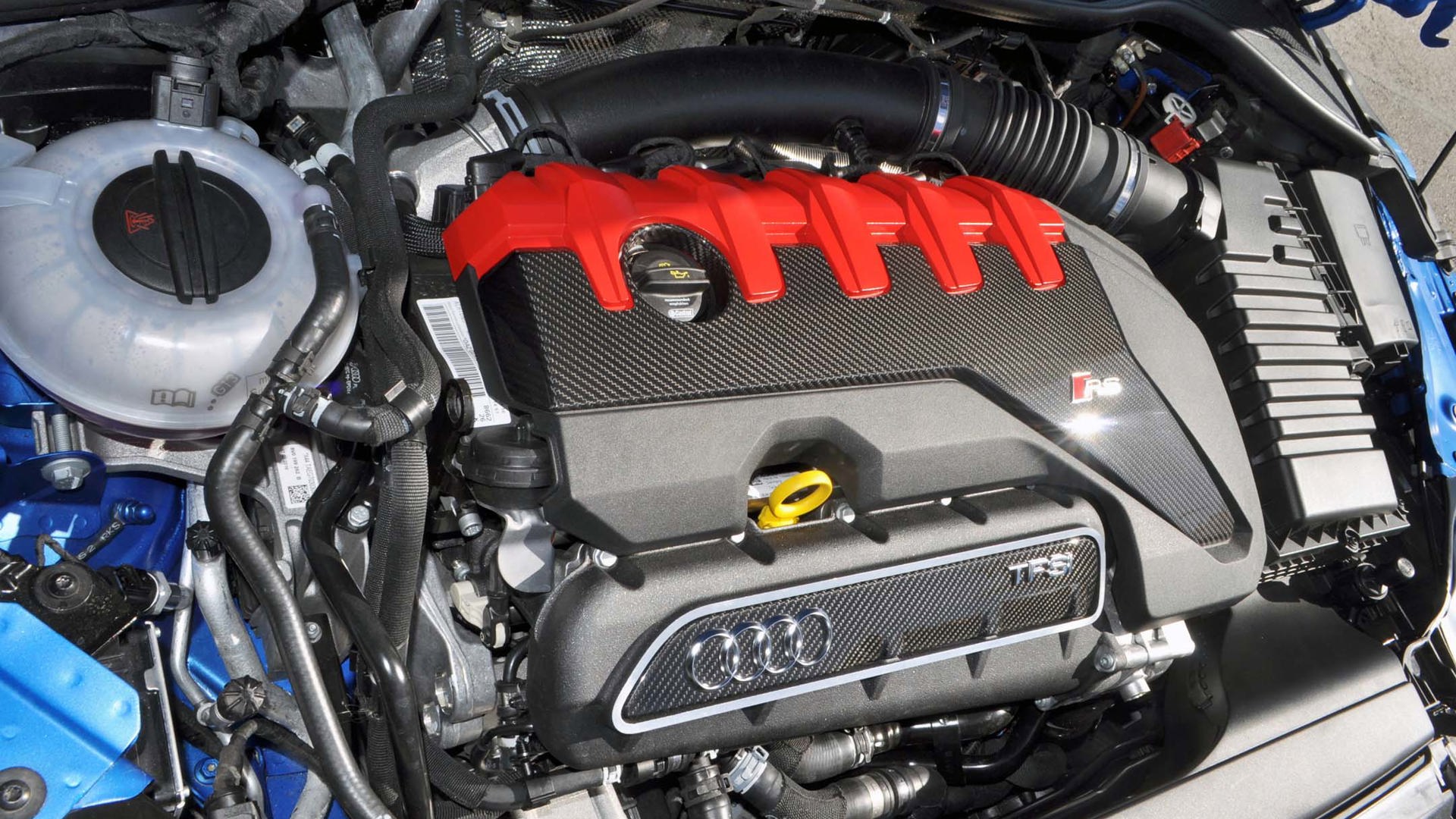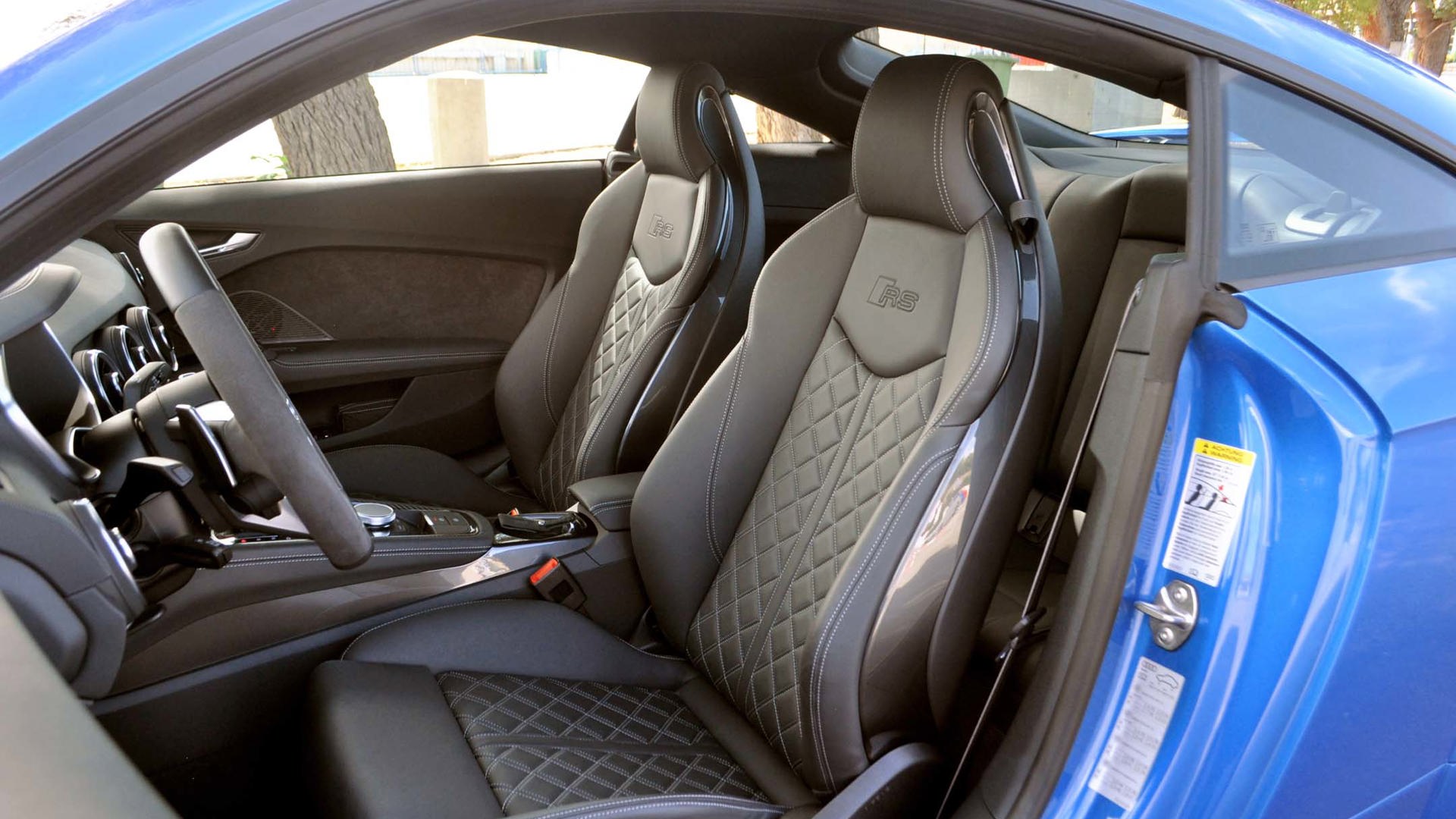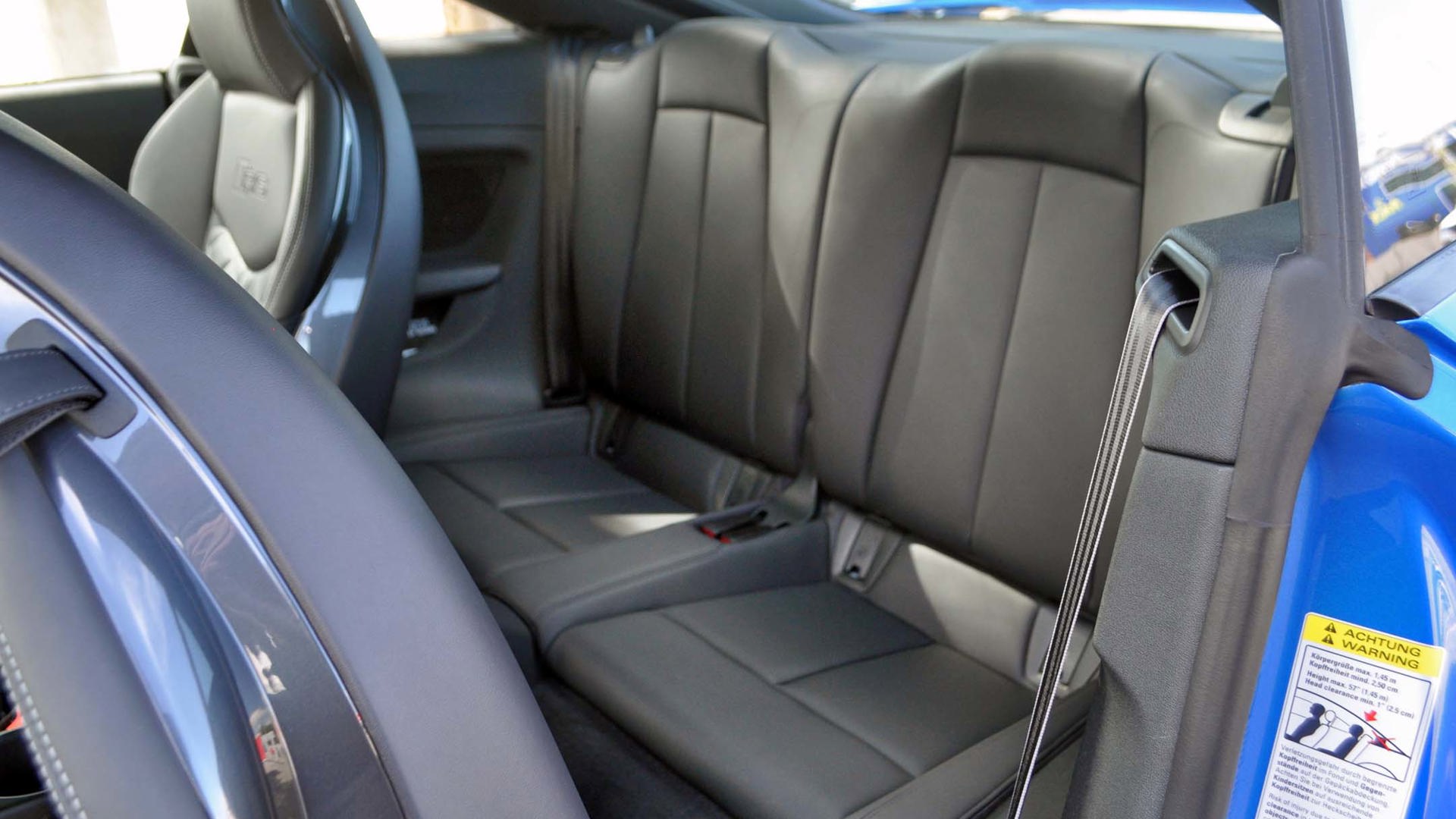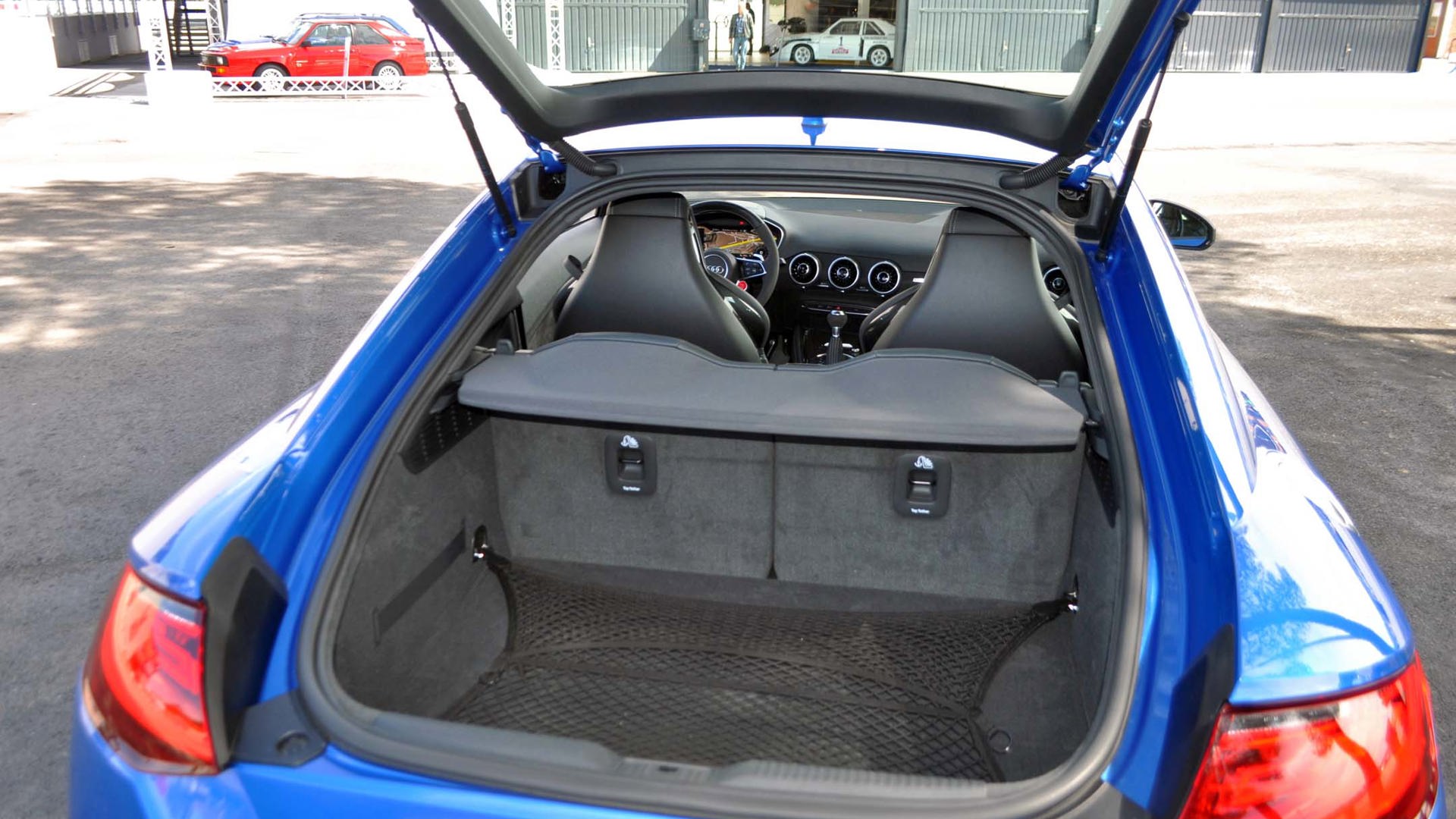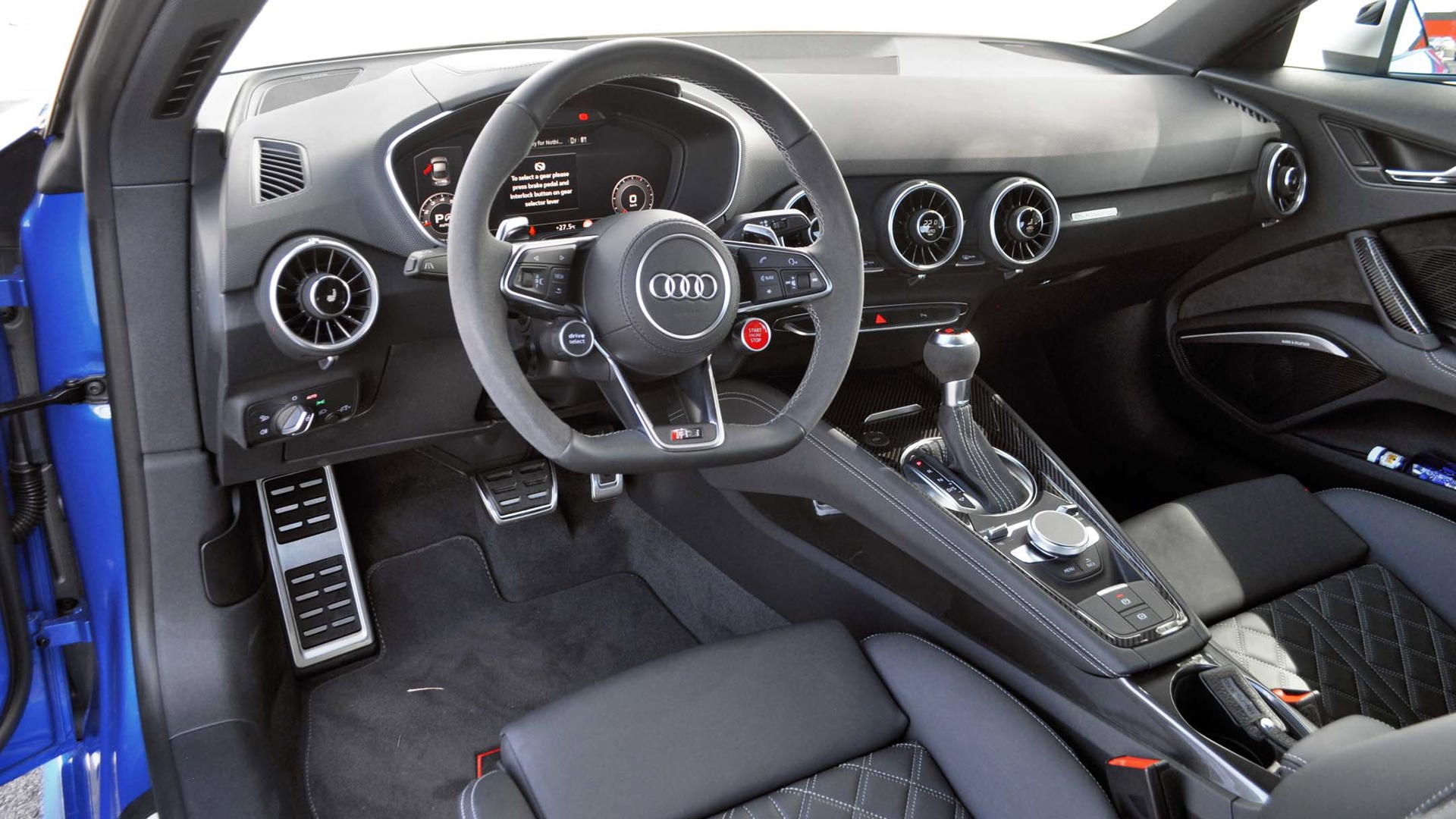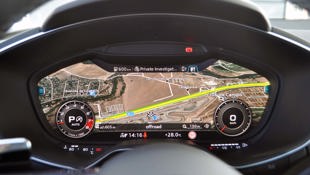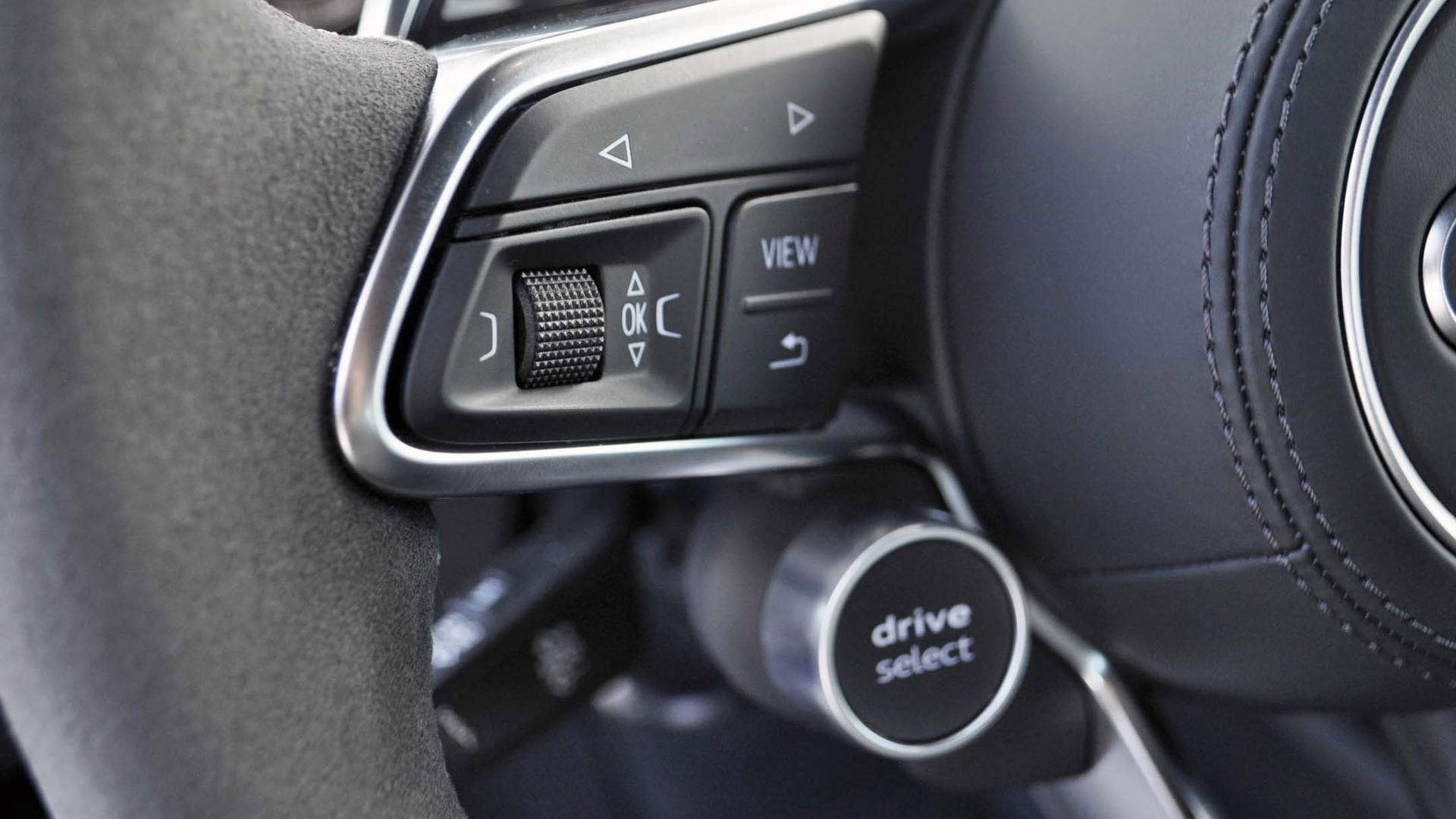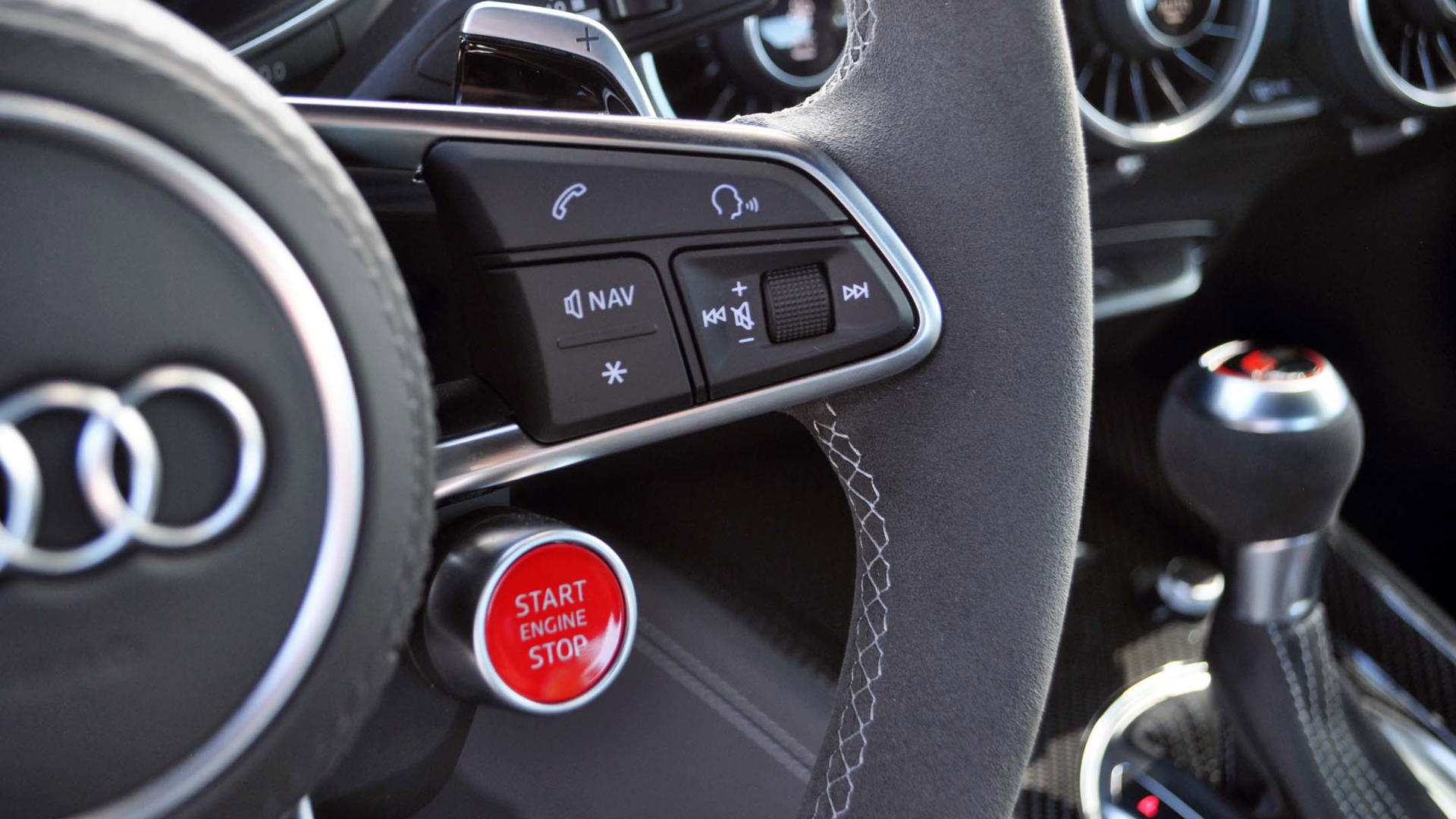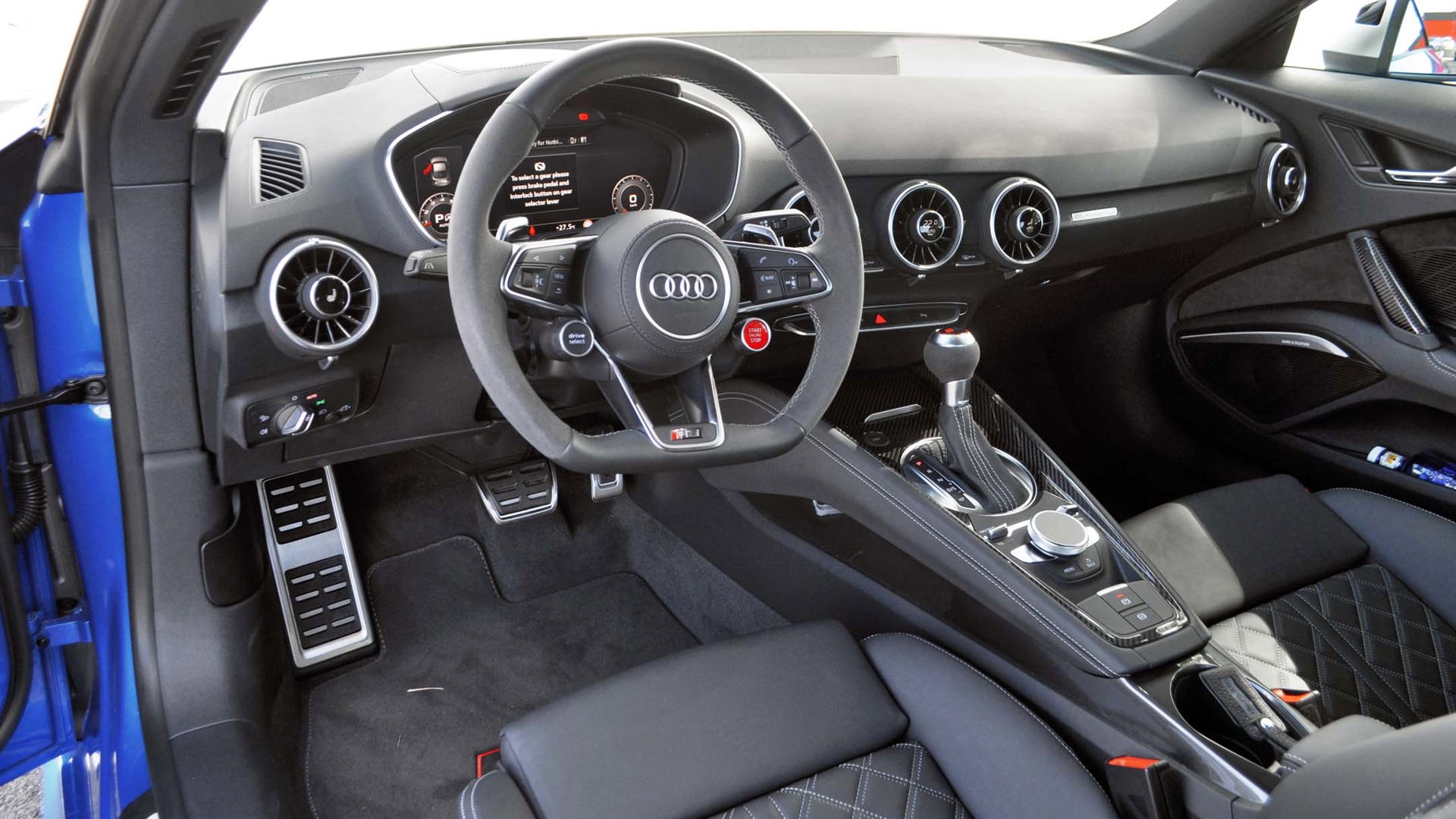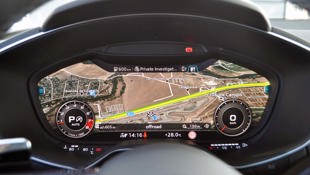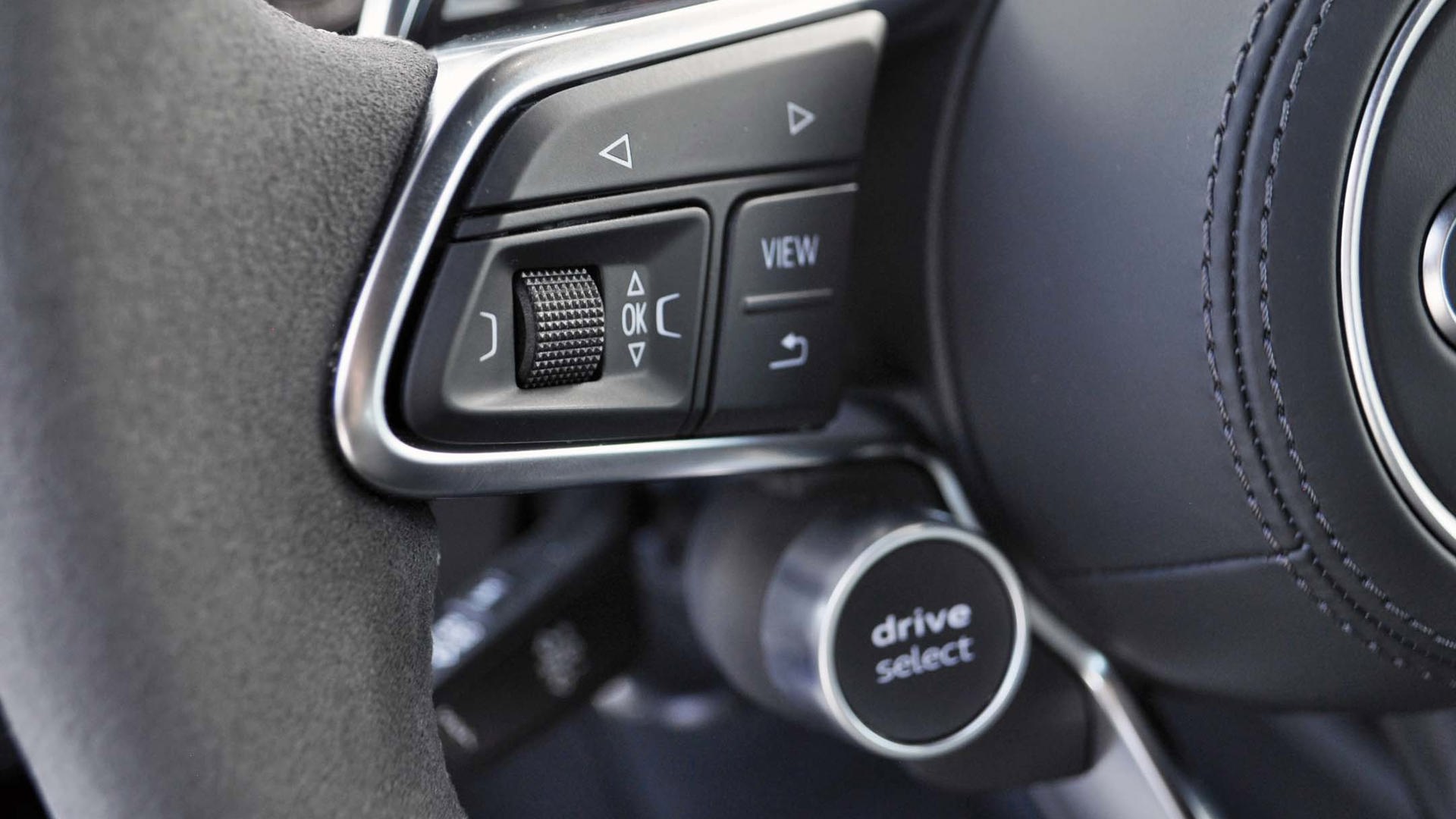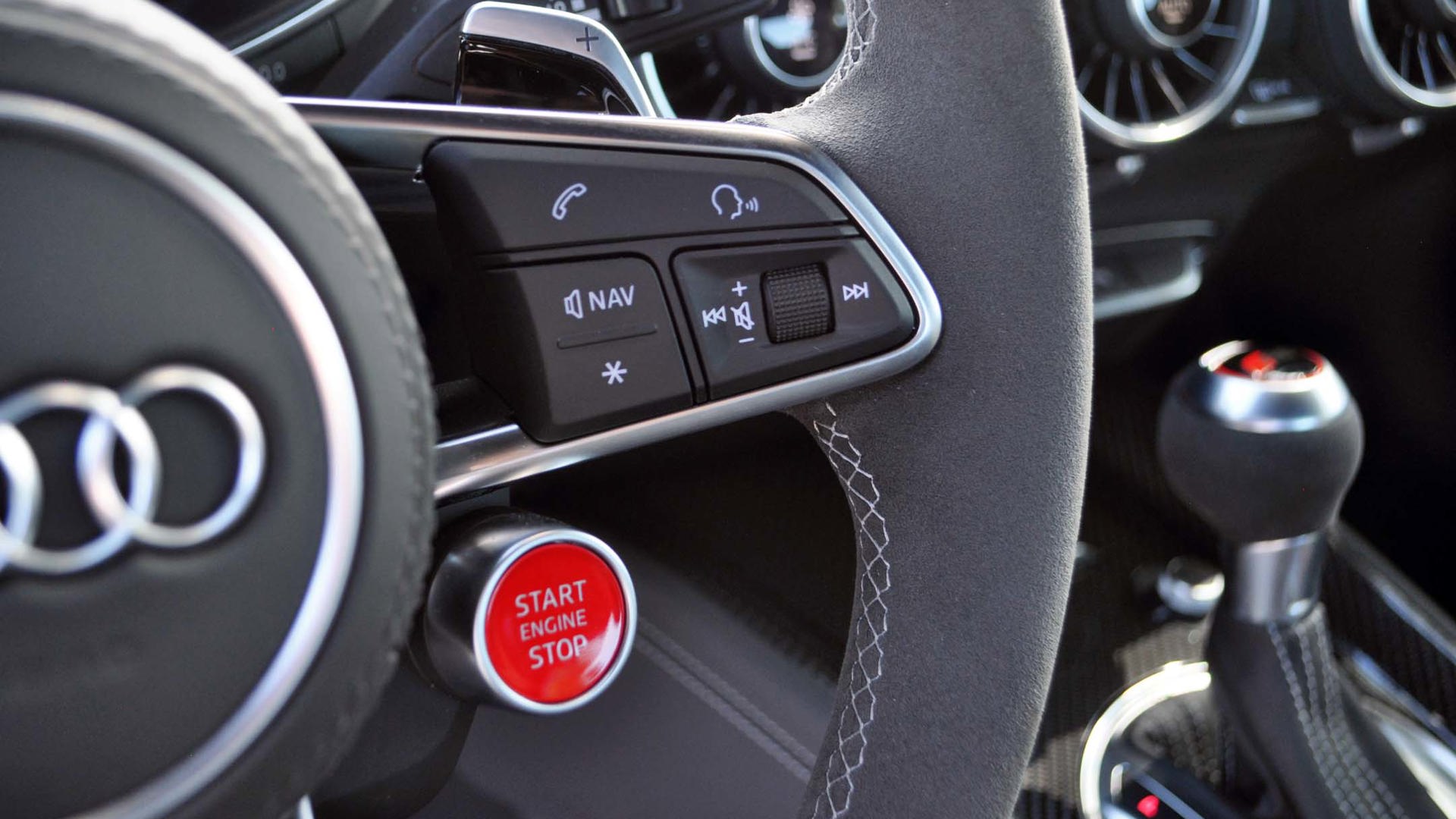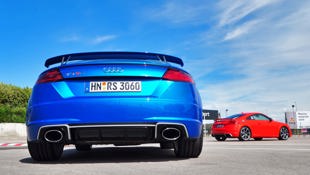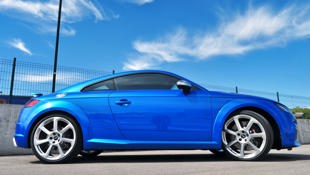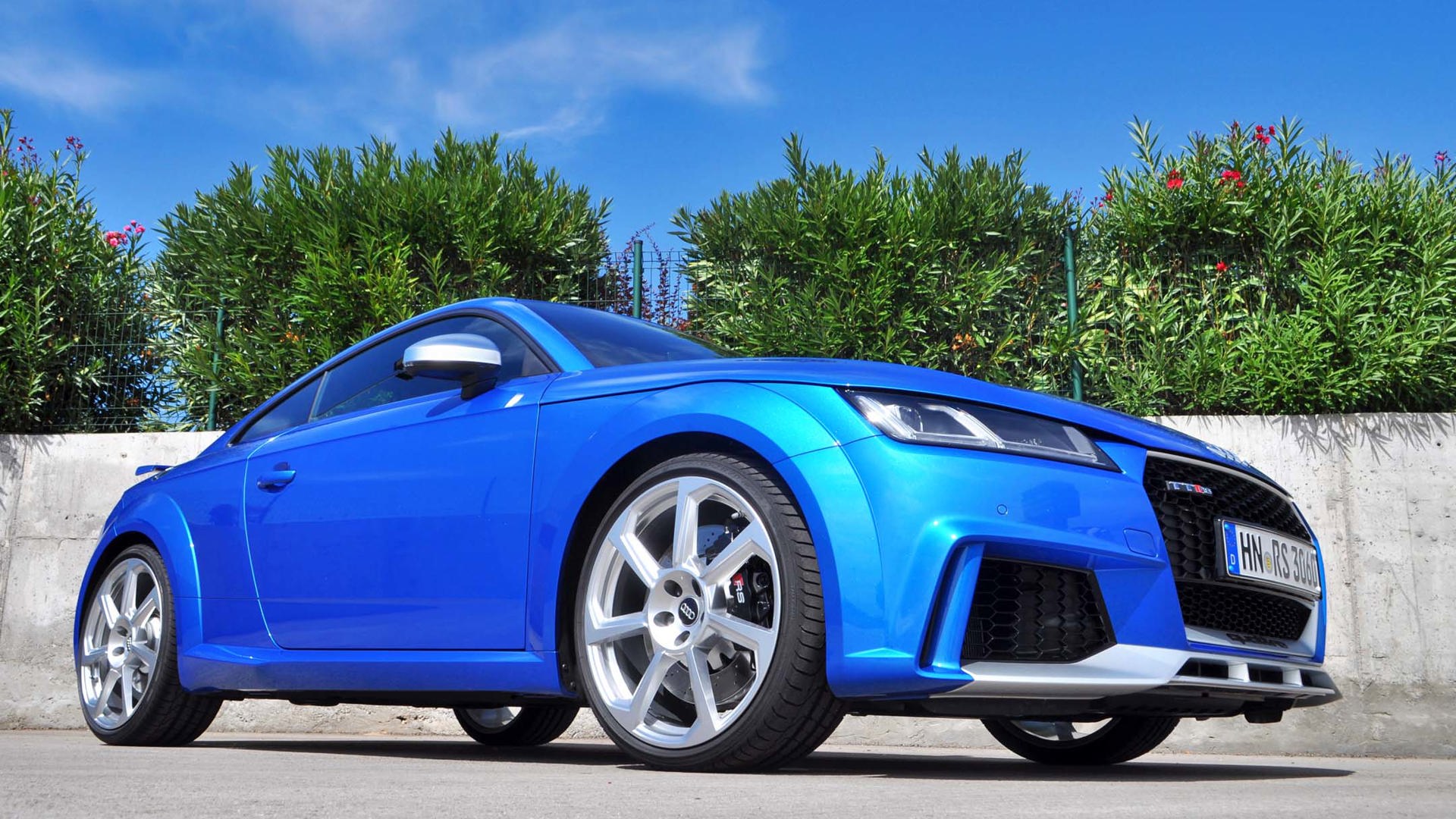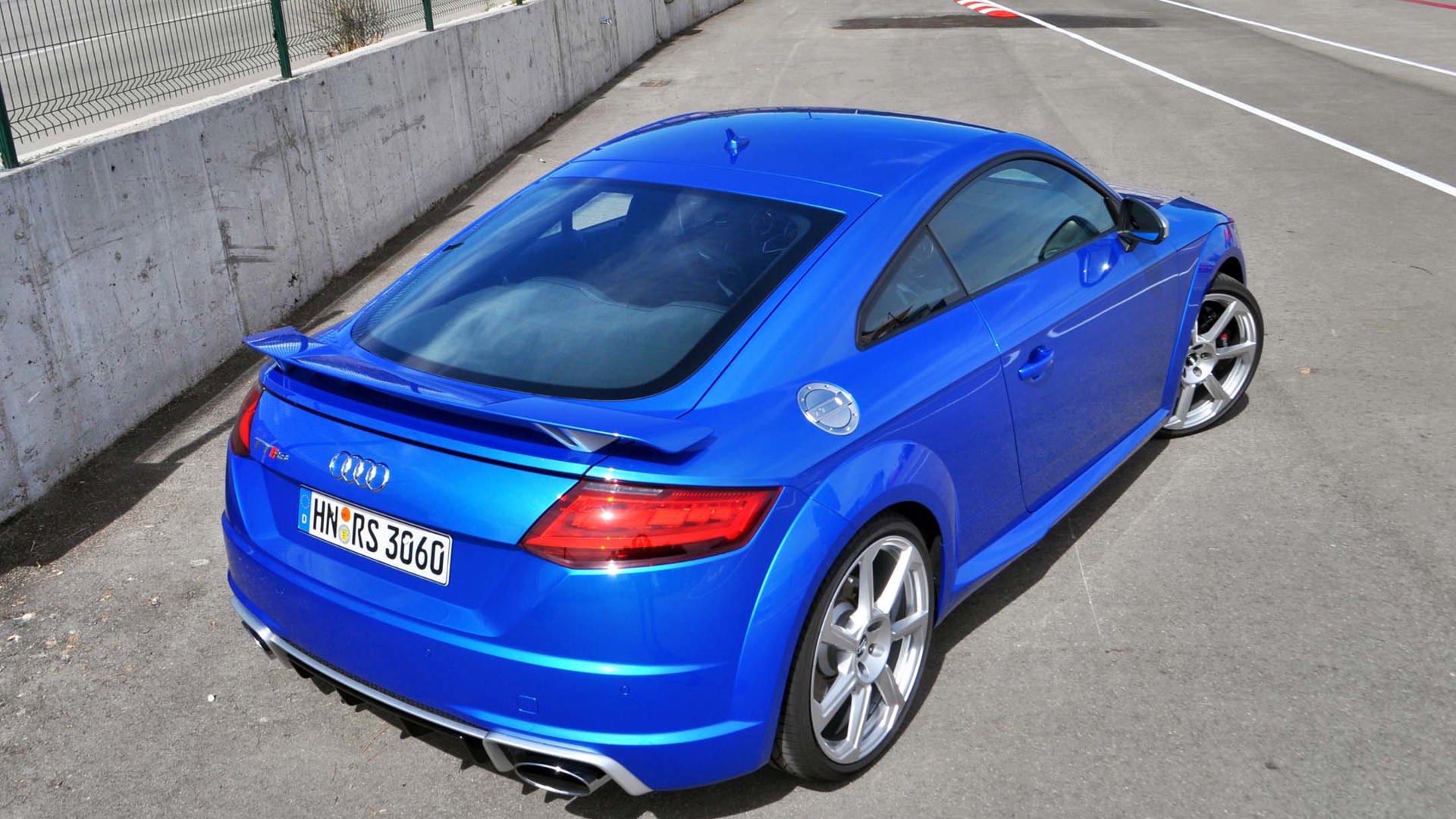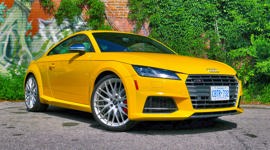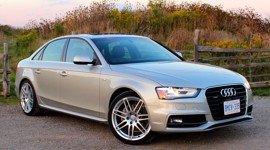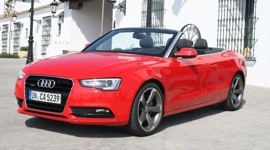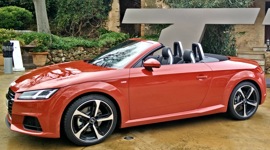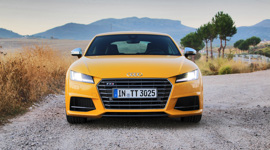Madrid, Spain – Ever since the Audi TT launched, it has always been about style, first and foremost. The bulbous fenders, the Teutonic interior, the platform shared with lesser Volkswagen products: it has had to battle the perception (and reality) that this luxurious two-door was great at looking good, inside and out, but less adept at dynamic driving fun.
The upcoming 2018 Audi TT RS is a philosophical and engineering balancing act on four wheels.
Think of it as an automotive Melania Trump – looking fine on the outside, but requiring a healthy amount of reconstruction work to get there.
This perception has lessened with the all-new 2017 Audi TT and TT S, which sharpened its road manners as well as its bodywork, but remains a stylishly luxurious coupe, with a capital S. Granted, they use a platform and powertrains eerily similar to ones found in the Volkswagen GTI and Golf R respectively, but in a tighter, more sports-oriented two-door body and with a much more advanced interior than the VWs.
So the upcoming 2018 Audi TT RS is a philosophical and engineering balancing act on four wheels. It’s an ambitious creation: an aggressively sporting 400 hp machine – dipping into a long-past yet enduring rally competition history – in a luxurious package that provides a healthy dose of Audi refinement and pampering.
So is it an Audi-worthy interior?
There’s an ironic tendency for the sportiest and priciest versions of vehicles to have the most boring, black-heavy interiors – often euphemized as “business-like” in marketing materials and the resulting breathless press reviews. The TT RS somewhat suffers from this, with an overwhelmingly dark if high-quality interior, broken up by some aluminum trim – as in this particular tester – or carbon-fibre accents.
It may be largely dark, especially in this particular black-leathered tester, but it’s no doubt of superb Audi quality. Quilted seats with diamond-pattern stitching help break up the inky monotony, with red and grey RS leather design options available. Three large turbine-like circular vents dominate the centre stack, with temperature and climate readings nestled within them. But the lack of a screen in that center stack also contributes to the somewhat stark atmosphere inside, especially from the passenger’s seat, where there’s no navigation system or audio controls to look at or adjust.
It’s perfect for drivers who like to maintain audio, phone and directional control – if you’ve ever smacked a passenger’s hand for meandering onto your settings, this system’s for you. Not so good for helpful passengers who like to actively co-pilot.
It’s a lot more visually interesting from the driver’s seat, thanks to Audi’s “virtual cockpit” that consists of a large and laser-sharp TFT screen that spills over and around where the main gauges usually reside. This system comes standard in the TT RS, and combined with Audi touch-sensitive MMI controls, allows for a multitude of audio/nav/gauge display options.
I found it’s not quite as easy to view your audio and phone settings through your steering wheel than in a nice, large centre screen, but the wheel has enough controls to make adjustments easily without having to look down. That flat-bottom steering wheel has nicely sporting Alcantara accents on the sides of the steering wheel, a tactile reminder of where your hands should be at all times. It also houses the start-stop button, similar to its placement on the R8 and most Ferraris now, among others.
Space inside is not an issue for sub-six-footers. The bolsters are more aggressive than on other TT models during snaky road cornering, but still comfortable enough to support long-distance highway drives. The two tiny rear seats are of the emergency-only variety, but this hasn’t seemed to deter many Porsche 911 drivers.
Rally-ready power is key
As aggressive as the TT RS Coupe looks outside, and as refined inside, it’s really the 400 hp all-wheel drive that excites the most here. That rally-ready power comes from a 2.5L turbocharged five-cylinder engine, perhaps the most unique aspect of the entire car. The inline-five is a rare animal these days, but there’s a history of fast fives with sporting Audis, starting back in 1977 with the 100 5E, and culminating in the turbocharged all-wheel-drive 1984 Sport Quattro, the road-going two-door that formed the basis of its competition-destroying Group B rally car.
From then on, Audi’s sportiest RS models have long featured turbocharged fives, including the RS2 Avant that pioneered the sporting station wagon. There was a fine example of one on display at the Jarama circuit near Madrid that had many folks at the launch event salivating for a drive, which was not to be.
And so my autoTRADER.ca app’s Saved Searches list grows again.
With all that aforementioned power and its accompanying 354 lb-ft of torque (the latter available as low as 1,700 rpm for near instant “oomph” from a stoplight or coming out of the pit lane), the TT RS revels in responding instantly to the driver’s right foot.
It’ll rush from rest to 100 km/h in 3.7 seconds, says Audi, using the seven-speed transmission’s launch control system and quick-changing paddle shifters.
This means that the TT RS is not only a pretty face, but also a serious athlete, running with the likes of Usain Bolt and Andre De Grasse of the automotive supercar world – think Nissan GT-R and BMW i8 levels of acceleration here, but at a much lower cost.
How much lower than the $150k range of those two is yet unknown, since pricing won’t be announced until closer to launch for this hottest TT. Arriving in summer 2017 as an ’18 model, the TT RS Coupe will likely come in at just above the $68,000-ish starting price range of its hardtop TT RS predecessor.
This hot two-door will be available in Roadster convertible versions in other markets, but sadly not in Canada, at least at launch.
All came out on the track, and on the street
So how do all these advanced systems, infused with nods to Audi’s race heritage, actually drive? On the street, it’s with the polished manner of a seasoned luxury retailer: quick to lead you to where you’d like to go, with little of the harshness that might encourage one to slow down. The finely surfaced roads around Jarama didn’t provide the potholed minefields common to winter-pounded Canadian cities, so it will be interesting to see how the ride comfort, which seems occasionally crisp yet polished here, will hold up at home.
Considering those sub-four-second acceleration numbers, the TT RS doesn’t feel quite that quick on the road – the launch control function that helps generate those numbers doesn’t suit an urban environment.
But all of that thrust’s screaming ferocity came to the fore at the track, where a straight test section for the launch control system was set up. The process is fairly simple: left thumb the Drive Select button on the steering wheel to toggle Dynamic mode – which affects engine/exhaust/steering/shifting response – then hold down the stability control button to disable it.
Then use your left foot to hold the brake, while flooring the accelerator, and the car will hold the revs at an un-dramatic 4,000 rpm, sending more power rearward from the AWD system in order to catapult the car forward.
“And you can do this as many times as you want, we designed this system to last,” said a supervising Audi engineer, a not-so-subtle dig at the launch control transmission issues experienced by some unhappy GT-R owners, surely exacerbated (and publicized) when Nissan wouldn’t honour their repairs under warranty at first.
This exercise also provided a good opportunity to hear the turbo five’s unique exhaust note: it sounds like a ferocious four that’s escaped the zoo. Keep your foot planted and it’s not quite the adrenaline rush of a burly V8 Corvette or the explosiveness of a 911 Turbo, but it’s an eager high-tech wail that remains surprisingly civilized, even approaching redline.
Handling was a similar story: sporting, refined, and with just a touch of body roll going into hard corners, on the track or on the road. That leaning is notably diminished in Dynamic mode, but the super light steering and tendency to push its nose out with understeer when overcooking it on the track laid bare its true personality.
The TT RS may be the fastest and most performance-oriented of the TT lineup, but it is more a track thoroughbred than full-out track monster. For folks in the market for a sporting yet luxurious two-door that’s heavy on refinement and style inside and out, the TT RS will do quite nicely indeed.
| Engine Displacement | 2.5L |
|---|---|
| Engine Cylinders | I5 |
| Peak Horsepower | 400 hp |
| Peak Torque | 354 lb-ft |
| Fuel Economy | 8.2 L/100 km (NEDC combined) |
| Cargo Space | 305 L |
